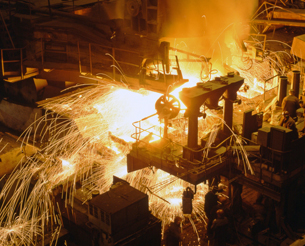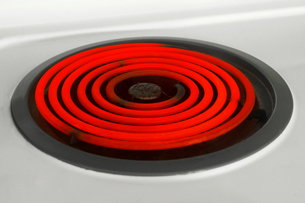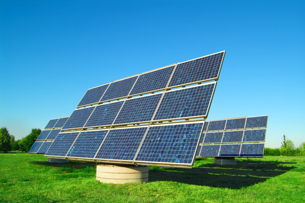Module 6
1. Module 6
1.1. Big Picture
Module 6—Wave-Particle Duality and Quantum Physics
 Big Picture
Big Picture

© Fedorenko Oleg Nikolaevich/shutterstock
At the turn of the 20th century, classical physics described electromagnetic radiation, such as visible light, using a wave model that was supported by the observations you explored in Module 5. It was also at this time that new evidence started to emerge which could not be explained using classical physics. Thus, a new “quantum” theory of electromagnetic radiation was born.

© Dana Bartekoske/shutterstock
This new evidence is related to how electromagnetic radiation is absorbed and emitted by various materials. For example, as molten metal is heated in a blast furnace it emits energy in a wide spectrum of radiation, including infrared heat apparent to those standing nearby, visible light (as seen in the photo on the right), and ultraviolet light. At increasing temperatures, more energy is emitted in specific wavelengths. This is similar to a stove burner that is black when cold and appears increasingly red as it becomes hot. There is a specific relationship between the temperature of an object and the spectrum of radiation it emits.
Other evidence is related to the absorption of electromagnetic radiation. If electromagnetic radiation of sufficient energy is incident on a photovoltaic cell (solar panel) an electrical current is produced which is proportional to the intensity of the incident radiation.
Such evidence is explained using the concept that energy transfers are quantized or bundled in packets called “photons.” Each photon has a specific amount of energy that is related to its wavelength or frequency. Furthermore, the conservation of momentum, a principle applied to physical objects, can also be demonstrated with X-rays revealing the dual particle and wave nature of electromagnetic radiation.

© Tobias Machhaus/shutterstock
Explaining the absorption and emission process required moving beyond classical physics and introducing the quantum model to explain and understand the wave-particle duality of electromagnetic radiation. In this module you will learn how the quantum model of light actually shows the wave-particle duality of EMR even though EMR was shown to behave like a wave in Module 5.
As you are working in Module 6, keep the following questions in mind:
- What is the quantum and how is it related to blackbody radiation?
- What is the photoelectric effect and how does it support wave-particle duality?
- How does the conservation of momentum and energy known as the Compton Effect support wave-particle duality?
 Module Assessment
Module Assessment
Each lesson has a teacher-marked assignment, based on work completed in the lesson. In addition, you will be graded on your contributions to the Discuss section of each lesson.
You will also be asked to complete Self-Check or Try This questions, which you should place in your Physics 30 course folder. These are not formally assessed but are a valuable way to practise the concepts and skills of the lesson. These activities can provide you with reflective feedback on your understanding of the lesson work.
You will be marked for your lesson work on the following items:
- Module 6: Lesson 1 Assignment
- Module 6: Lesson 2 Assignment
- Module 6: Lesson 3 Assignment
At the end of the module you will complete a module assessment that consists of two Diploma Exam-style written-response questions. The first question will assess your knowledge of the photoelectric effect and the second question will assess your knowledge of the Compton effect. You will find these questions in the Module 6 Summary and Assessment. If you have any questions contact your teacher.